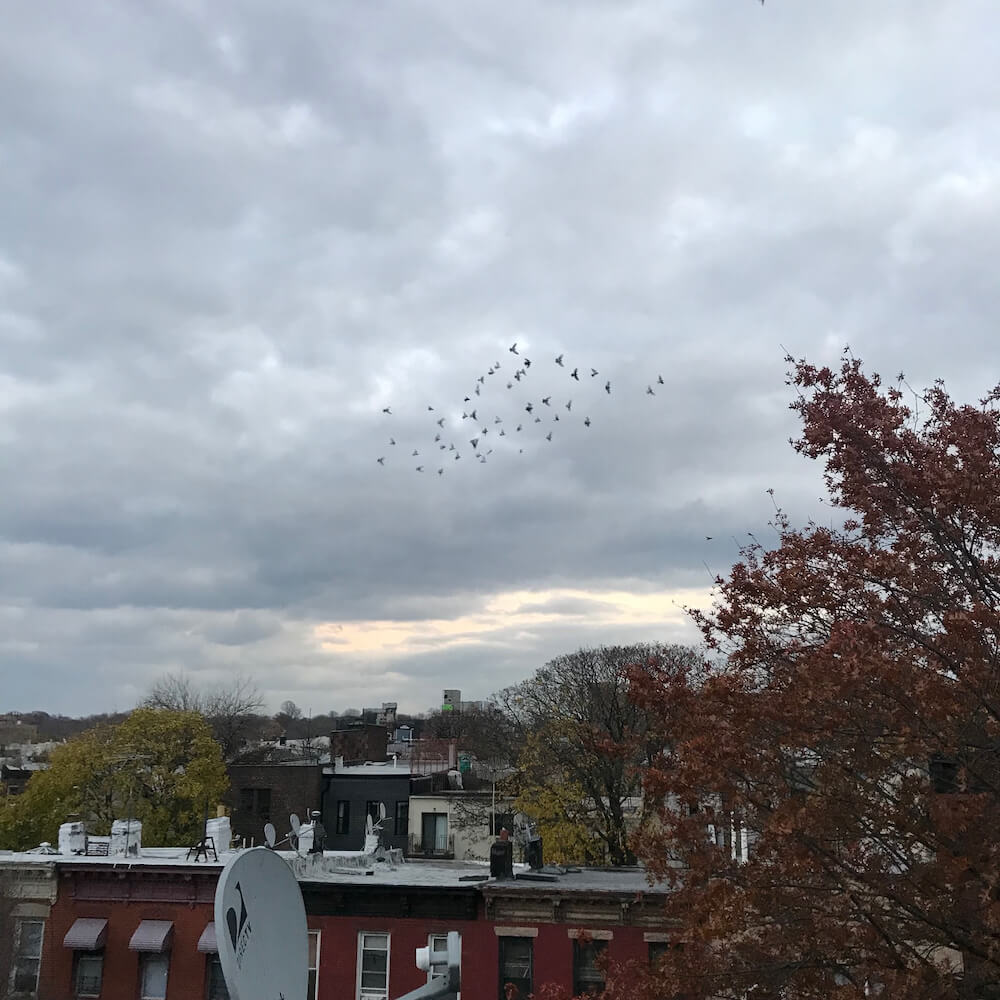Pigeon Pat: The Interview

Pat McCarthy, aka Pigeon Pat, is a Brooklyn-based pigeon-flyer, sculptor and zine-maker. Keeping over two hundred pigeons in a coop on the roof of his Bushwick apartment building, the 31-year-old artist is a part of one of New York’s longstanding subcultures — the hierarchical, fiercely competitive world of pigeon-flyers; the largest community of its kind in the nation. On a cold November day, we caught up with McCarthy to learn more about how the birds inform his creative practice, the truth about the Brooklyn vs. Bronx rivalry, and the perils of hawk season.
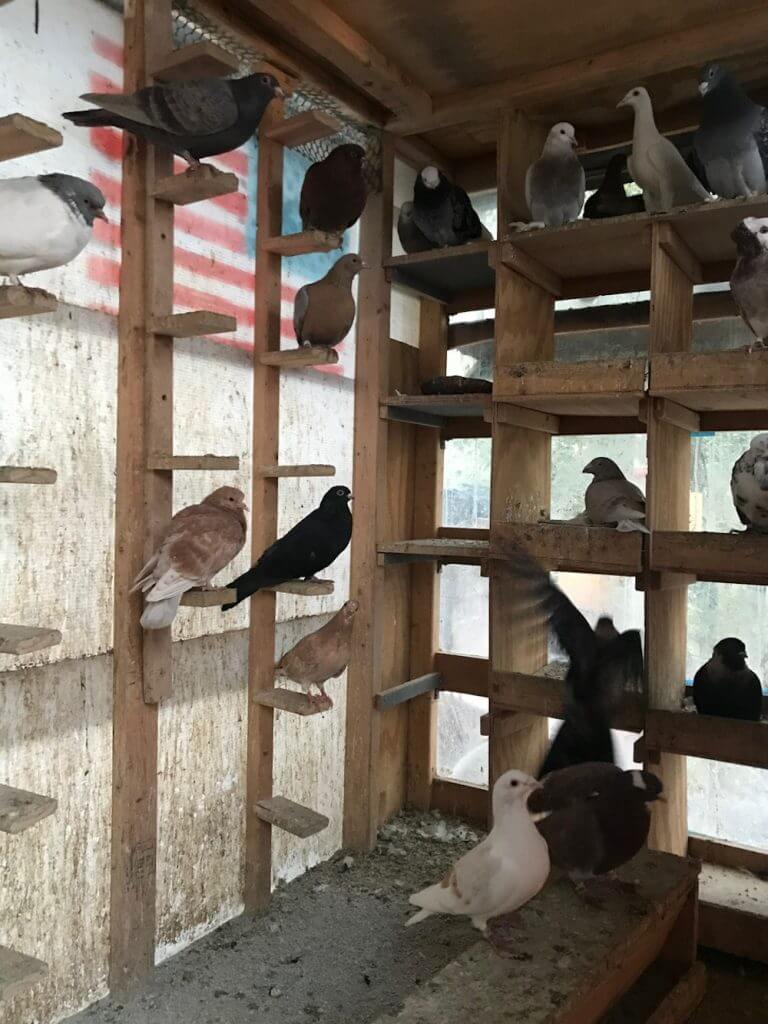
I’ve lived in New York for most of my life and wasn’t aware of the pigeon-flying community? How did you first discover the scene?
I moved to Bushwick when I was just a kid, 10 or 11 years ago. I came here for the arts and the adventure and the punk rock, all the normal things that people come to Bushwick to find community in. I spotted this pigeon store, Broadway Pigeon & Pet Supply, right there on Broadway that services the local pigeon-keeping community. I was in this apartment not one month when I started hanging out there. They put me onto the world of birds. I bought my first bird soon after — I started with a couple indoors. My roommates freaked out and so I moved up to the roof.
At the time, the store was run by this old timer, Gus. He was a lifer, a guy who was flying pigeons in Bushwick in the 40s. He started telling be about the history of pigeon flying, the social and New York aspects of it; how people fly pigeons the world around and how Bushwick was the pigeon-flying capital of the country, not just the city. I bought my first bird and I called him Joey. He was a yellow Pepper-head Roller. Joey cost $5 and they put him in a paper bag and cut a little hole for him, and that’s it. I was 21 with my bird and I thought: this is my life now. It was my gateway to the neighborhood and a way to dig the landscape and the people.
What was it that appealed to you?
Ten years ago I was making a lot of zines. I was interested in folkloric narratives and underground modes of communication and really primed for the nuance of the whole wide world of pigeon-keeping. I had been travelling so much for a few years before I came to New York and I was making zines about my travels in the tradition of young, punk travel zines where you get into the subcultures of a place. When I moved to New York I needed an outlet for that curious side. I wasn’t doing it so tangibly, like riding buses and hitchhiking across the country, but I could still sit on my roof and see the localized view of things.
How has that developed in the past decade?
Over the years I’ve gone from being a zine-maker into being a sculptor for a living. Keeping pigeons there is always a list of things to make, practical things and also weird surreal naturalist objects to make. The pigeons gave me an authentic, down-to-earth platform for me to make art rather than sitting in an empty studio and thinking I should make something about politics or color theory. I needed a more meat and potatoes reason to make objects.
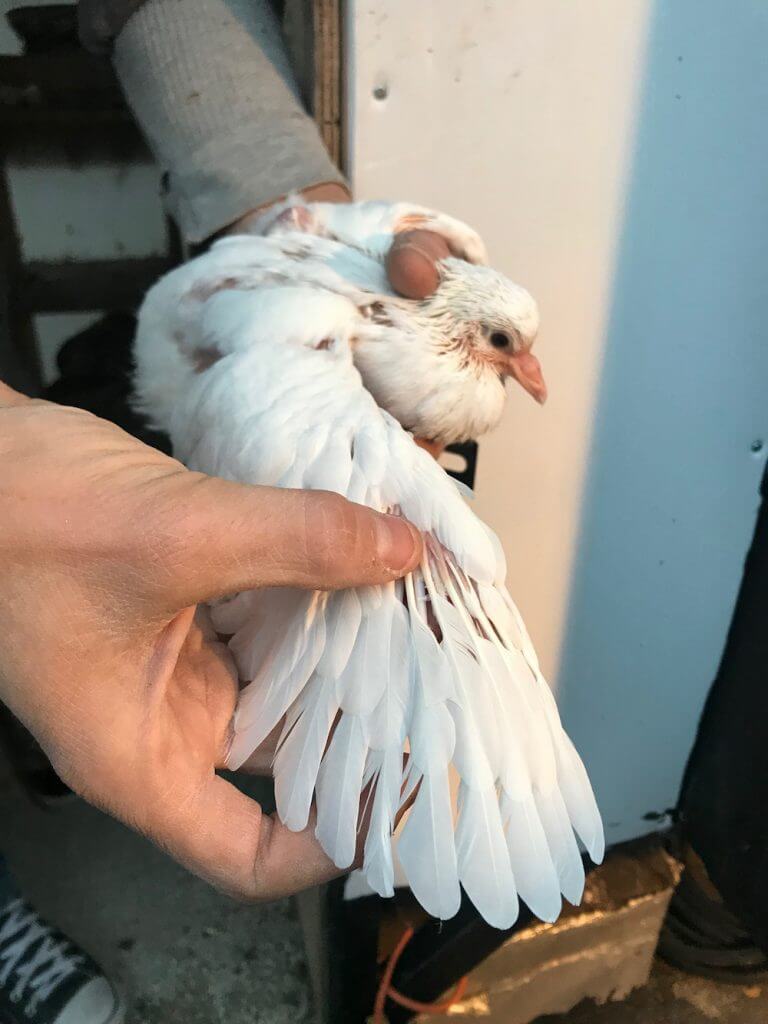
What happens on your roof?
I raise different breeds of domestic performance pigeons and train them to fly acrobatically and compete, I suppose, with the neighbors and other pigeon keepers, both for style and aesthetic.
Who judges this?
The scene. We all judge each other. It’s very hierarchical. I’ve been in this game for nine years and I’m still a rookie though a contender. I’m not some joker with 40 birds in his bedroom. I’m one of the guys but I’m still low on the totem. Over the years certain guys have mentored me and kind of put me down before I could get the nod from more senior pigeon-fliers.
How many people are we talking about?
There are hundreds of guys. Bushwick has fifty-to-a-hundred in this neighborhood alone. Brooklyn, in general, has the biggest scene and we have a fierce rivalry with those Bronx guys who have a pretty solid scene. The rivalry is real and it’s not just borough-to-borough. We fly birds differently in Brooklyn than in the Bronx.
What do you differently than the Bronx? Or, should I say, what do you do better?
We fly birds in Brooklyn that are harder to fly, harder to train, harder to keep that are also way sexier birds than they fly in the Bronx.
What to you know about the history of pigeon-flying?
Pigeon-keeping started eight to ten thousand years ago in Mesopotamia. Pigeons were the first birds to be domesticated around the same time as dogs. They were domesticated for food and pigeons are still a normal bird you[‘d] eat in the Middle East and North Africa. Soon after, pigeons began to be used for performance flying or for flying long distances as messenger or homing pigeons. As civilization grew around Mesopotamia so did pigeon-keeping into Northern Africa and into Greece and Europe.
All the communities of the world had their own breeds of pigeons. There are more breeds of pigeon than dogs and cats put together. Nowadays the most common thing to do all over the world is race pigeons, where you have these big honking homer pigeons that, to the undiscerning eye, don’t look very different than street pigeons. But these birds can find home from any direction. If they’re born here you can bring them anywhere and they will find a way back to Brooklyn.
You keep looking out the window. Is everything okay?
I see feathers. It’s the beginning of hawk season. New York City has the largest community of Peregrine falcons in the country. There are a hundred-and-fifty pair. Peregrine falcons are the fastest animals in the world and they are total motherfuckers. There are also hawks. And they eat our pigeons. How often do you see a hawk diving down to the street to eat a street pigeon? Never. They eat the ones up here where there are hundreds on the roof. Anyway when you see feathers falling to the street it could imply a bird has been eaten. In the winter it happens a lot and there is nothing you can do about it besides blowing a whistle and shaking your fist at them.
What makes the New York flying community unique?
There are certain parts of the world where it’s the shit to fly pigeons; in China and Belgium, for example, but in New York the way we fly birds is very New York-centric. We fly pigeons as a synchronized flock rather than racing one bird. It’s about the acrobatics of it all. The only other place they fly this way is in Cairo and the reason is because we’re on rooftops and it has a social aspect. In Brooklyn we also fly one of the very few American breeds of pigeons — the New York flight or the Brooklyn Flight. This breed is characterized by their really long cherry red beaks, bright red eyes and crazy color patterns.
And New York Flights are super sexy. They’re all spotted and different shades of red and yellow, and have these funny hairdos, crowns. It’s a Brooklyn bird, super swagged-out. These birds are difficult to work with and they’re hard to get flying really high. You get a lot of clout if you catch some Flights off of someone.
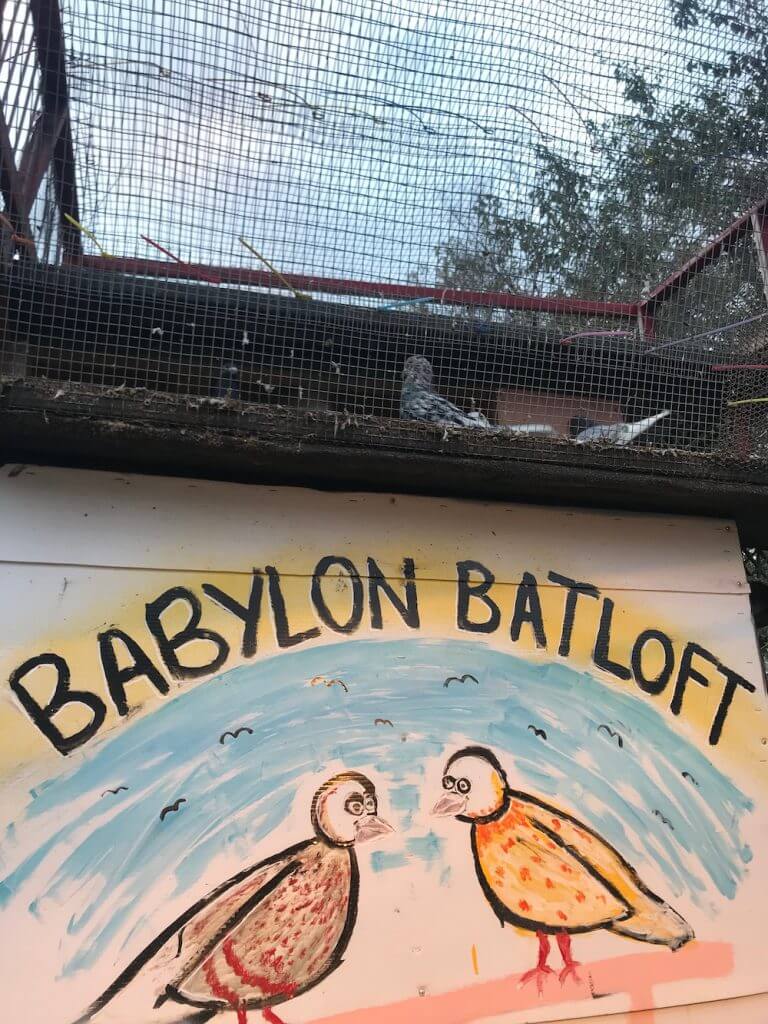
What do you mean, “catch some?”
We’re also in competition to catch each other’s birds. I’ll be out flying my birds and my neighbor will be out on his roof flying his birds and he’ll see my birds inch closer to his roof and he’ll blow his whistle and wave his flag and his birds will go up and intercept my birds and then we’re trying to see who can take more of the birds into the coop with his birds. It’s bird piracy.
Do you get your birds back?
It depends on your relationship with your neighbor. We’ve got this saying, “Friends on the street, enemies on the roof.” It’s supposed to be catch-keep. You don’t have to play that way but you’re not moving up on the totem pole in the scene if you have a penchant for being Johnny Give-back. I mean, this is Brooklyn and there are a lot of big-chested guys. I’m a little fringe in that regard because I’m not so competitive.
But it’s important to point out that we don’t feel possession in the way that people feel for a dog or a cat or even the way if you had a ranch; you’d own a herd of cattle, with a piece of paper saying I, as a human, own you, as an animal. With pigeons, it’s on them if they decide to come back or not. You’re going to lose some of them either to another pigeon guy or to the hawk or falcon. Say I have 200 birds today, next week I might have ten fewer or ten more. There is a superstition that you’re not supposed to name a pigeon, and pick a favorite, because that’s the one that gets away.
You mentioned big-chested guys. What’s the composition of the pigeon-flying community?
In New York it’s a very mixed bag ethnically and economically, though it’s pretty dominated by men. There are a few ladies: my girlfriend being one of them, who are seen as flyers. The pet shop is now run by a woman and she’s the best. That aside, there are rich dudes, broke dudes. This is Bushwick so there are tons of Puerto Ricans, but there is everything else. As for age, I’m not the youngest flyer but I’m probably the youngest with this many birds. I know younger guys that have twenty birds. I’m 31 and that’s pretty young in a scene where the guys are mainly in their 50s and on up. It’s mostly guys who grew up with this, with their Pops keeping a pigeon coop on the roof or in the backyard. It’s not common to come on to it later in life.
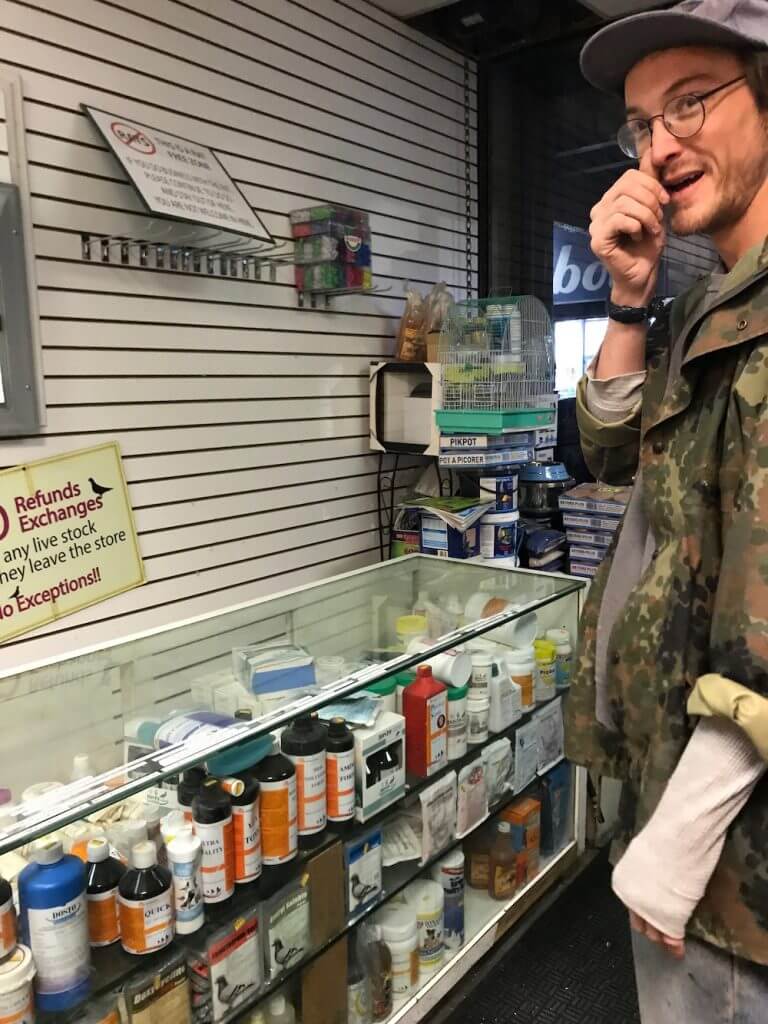
Image courtesy of Pat McCarthy
What kind of pigeons do you keep?
I have what is called scrambled eggs, lots of different breeds. Some people have 400 birds and they all look exactly the same, with the same colors, the same patterning. I do have a bunch of Bald Head Rollers, which have the white heads like the bald eagle. I think they’re the coolest. They’re favored by Puerto Ricans locally and have the best of both worlds between the Flights and the Tipplers, which is the Bronx bird, because they fly as well as Tippler. But they’re pretty, like Flights, with these mish-mashed lacey and mottled colors.
You’ve decorated the walls to one coop with prints of some famous paintings. I see a Van Gogh.
Pigeons see the same colors that we do. They see depth differently. They bob their heads because they’re almost taking two photos with their mind — that’s how they understand depth, whereas falcons or other predators have eyes on the front of the head the way humans do. Pigeons though see color and they see hard outline the way people do. That makes me think they would appreciate the work of Van Gogh or Thomas Cole or whatever I’ve got up in there.
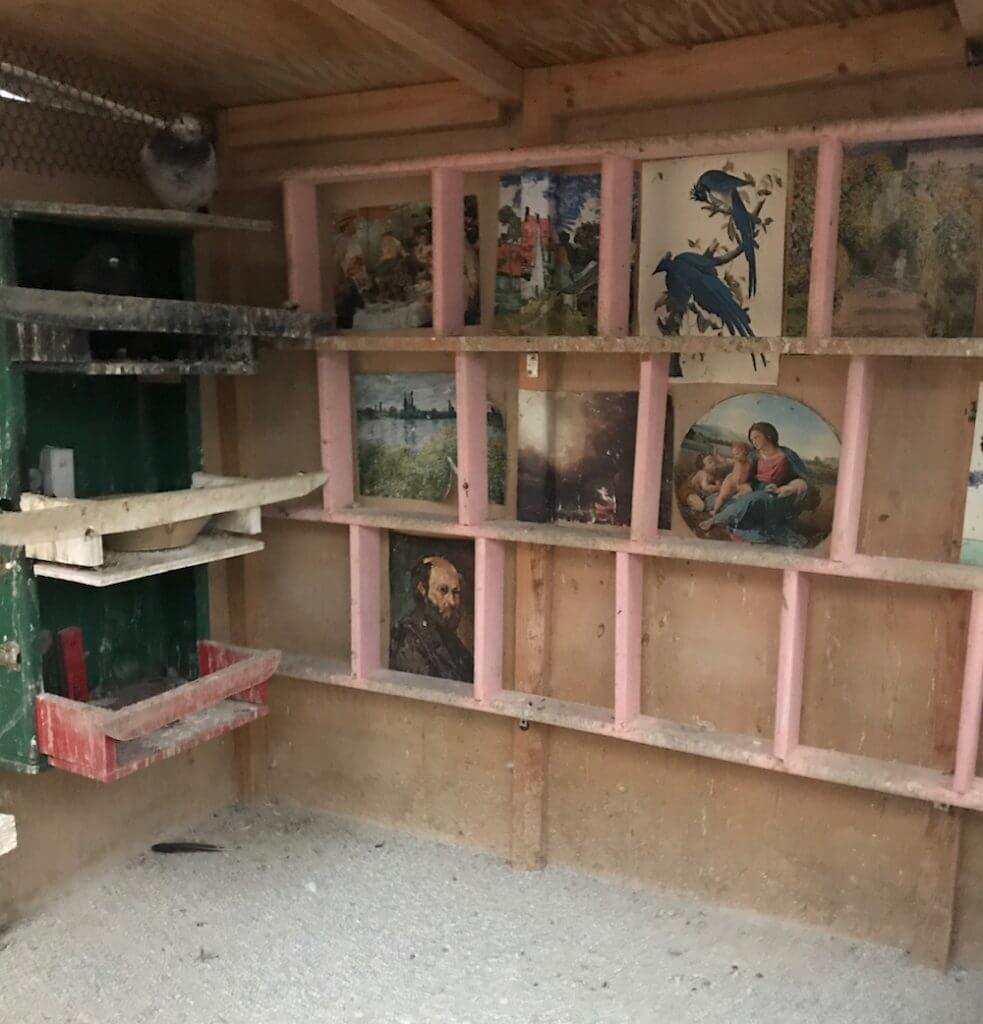
You were talking about the pigeons informing your practice in a practical way. Can you give an example?
The coops are one way, as a sort of installation. There are all these systems you need to maintain to keep pigeons, health management and waste management, food and shelter. But watching them fly is the heady crux of why I do it, the beauty and poetry of movement. As an artist and, say, not a plumber, that’s what I appreciate the most and maybe why I don’t care so much about catching other dudes’ birds. I make things that can help the pigeons but I also make things that are voodoo objects, models of coops or zines about pigeon-keeping culture.
Are the pigeons part of the art?
For the past two summers I’ve done shows at Boo-Hooray Gallery in Montauk. This year, I bought a three-wheeler (like the cops sometimes drive in) and I turned that into a coop and I trained these pigeons to fly down the island. I built a little boat with a surfboard that went next to it and I turned a weed whacker into a long-tail motorboat engine. I staged a performance where I went out to the sea in my boat with the pigeons right next to me on their surfboard.
I read poetry over ham radio. I read the words to The Trashmen’s classic “Surfin Bird”, and I read it very slowly and seriously, then I released the pigeons and they flew back to Brooklyn. That’s just an example of how they’re involved. These guys give me a reason to stage shows and happenings and involve other people. Pigeons give me a frame to operate within which is hard especially for a young artist, to find something authentic to your experience to make art.
